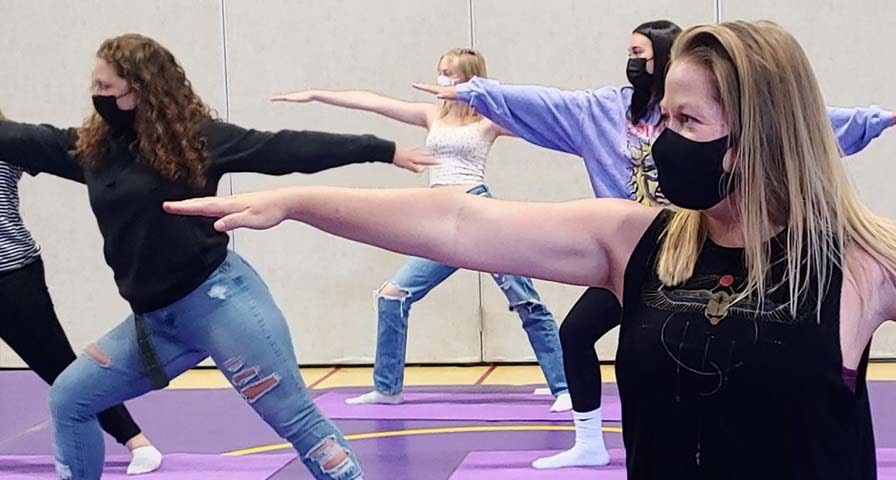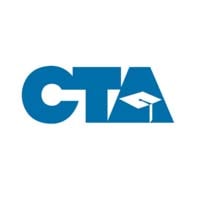Originally published Aug. 6, 2021 by the California Teachers Association.
By Sherry Posnick-Goodwin
PE teachers are ready to whip students into shape this fall, and it’s not going to be easy. After 18 months of reduced activity, the challenge is real.
During the pandemic, many students became couch potatoes, sitting in front of screens instead of enjoying sports, outdoor activities or recess. California waived the minimum PE requirements, although many schools offered virtual instruction. Teachers say some students participated but many did not, resulting in weight gain.
Much like adults, children can also experience stress and anxiety at various times. Coach Phelps teaches them that daily physical activity helps them cope
“Overall, we’ve seen excessive weight gain during the pandemic,” says Dr. Elizabeth Shepard, medical director of the pediatric weight clinic at Stanford Children’s Health Center. Pre-pandemic, children in California had a higher rate of obesity compared to children in other states, and that is likely to rise when new data is collected.
Rebuilding students’ strength, endurance and energy won’t happen overnight, but educators are working on their game plan for returning students to better health.
“When the pandemic hit, it was an adjustment for all teachers,” observes Sarah Bowers, a PE teacher at Ukiah High School. “Putting a physical education teacher in front of a computer screen was especially challenging. But PE teachers have worked hard to keep kids active and moving during the pandemic. And we are looking forward to getting them even more active in the new school year.”
A tough virtual workout
PE was among the most challenging classes to teach in a pandemic. Some schools continued to keep PE online — even when in-person learning resumed — because exertion and contact sports can spread droplets.
Trent Suzuki made a big effort to create a “culture of PE” where students could bond with each other virtually and keep moving. He estimates 65 percent of students attended online classes last year. They jumped rope, juggled, and did kick boxing and cardio drumming from home, using water bottles and cans for weight lifting.
“I had to think outside the box,” says the Escondido Elementary Educators Association member, who teaches at multiple schools. “There was camaraderie and teamwork. We made no excuses and talked about how we were all in this together — and going to stay strong together. It probably helped that I never told them that they weren’t being graded in the pandemic.”
Suzuki, who was named Elementary Physical Education Teacher of the Year in 2020 by the California Association for Health, Physical Education, Recreation and Dance, plans to go slower than usual when he resumes in-person instruction this fall.
“For the 35 percent of students who are not in condition, we will start moderately and build up gradually. We may start with one sit-up and one squat, and then add more each day. Instead of running an entire lap, we may walk for part of it. We will work our way back to fitness one step at a time.”
For Brittany Washington, teaching dance online was tough. “I’m not going to lie, it was a challenge,” says the Lynwood High School teacher, who is also a cheer coach at her school and a Los Angeles Rams cheerleader who performed at the Super Bowl in 2019. “Some of my students wanted to dance, and others wanted to stay in bed all day. The pandemic made some kids really lazy. The most difficult thing was trying to push students so they wanted to engage.”
The Lynwood Teachers Association member turned her living room into a dance studio with rollaway mirrors and encouraged students to enjoy moving to jazz and hip hop while expressing their pent-up emotions. They told her it made them feel better.
“We talked about dance as a stress reliever and a means of self-expression. Even though we stayed in distance learning throughout last year, we came together to film a spring concert.”
Jen Tsurumoto created high-energy videos on her YouTube channel for her fourth graders at Parkside Elementary School, and taught fifth and sixth graders at Brook Haven School in Sebastopol on Zoom in real time. It was a tremendous challenge as a first-year teacher.
“Other than my PE classes, students weren’t getting much exercise,” says the Sebastopol Elementary Teachers Association member. “I tried to make it as fun as possible. I needed them to turn their cameras on for safety. Eventually, all the kids had their cameras on. Even if I just saw the top of a head or an arm moving around, I knew they were safe and participating.”
Transitioning back to in‑person
When Tsurumoto’s students returned last April, moving around and staying socially distant was possible through activities such as disc golf (a combination of Frisbee and golf), running and pickle ball.
“We played a lot of games like Sharks and Minnows with pool noodles that keep them apart. It was exciting to see them progress in health and fitness. With asynchronous learning, kids were on the honor system, and I’m not really sure how well that worked.”
The new normal means no dressing rooms, no changing clothes, and individual “PE kits” instead of shared equipment, says Betsy Erickson, a PE teacher at River City High School in West Sacramento, who was the 2021 Secondary Teacher of the Year for Washington Unified School District.
“We’ve provided every student an individual bag of equipment,” says Erickson, a member of West Sacramento Teachers Association. Depending on their grade, students may have a soccer ball, weights, resistance bands, jump rope, beanbags, or paddles for pickle ball in their bags.
“It’s absolutely been a slow start, and we are building up to more activity,” says Erickson. “I tell them it’s OK to walk around the track; they don’t have to be a runner right away. Many of them were out of school for an entire year. And I know it’s harder for them to exercise wearing masks.”
Doing things in the new normal takes longer, she observes. Students must sanitize their hands in between activities and figure out positioning to stay socially distanced. But students take it in stride.
“They want to be on campus instead of at home, and are pretty much willing to do whatever I ask them to do. They are willing to make the new normal work.”
Robin Chicca, a teacher at Monrovia High School, says students appreciate being able to exercise after quarantining. In previous years, there were “groans and grunts” when they were asked to exert themselves. Now they do so without complaining. They exercise outside for safety, and sometimes in high temperatures, so she doesn’t make things too strenuous as they build up endurance.
“Now that they’ve opened up vaccines to include 12- to 16-year-olds, COVID cases will continue to go down and things can hopefully go back to normal,” says Chicca, a Monrovia Teachers Association member.
A return to health
Chicca emphasized to students throughout last year that working out helps with stress, anxiety and depression. Students were severely impacted; her campus lost two students to suicide in 2020.
“We did a whole lesson on brain chemicals and endorphins, and they learned that the physical response to exercise is a boost in emotional health. I have tried very hard to connect with my students emotionally during this time.”
“Research shows that when you exercise, it improves the brain,” says Felix Quiñónez, an elementary PE instructor named Teacher of the Year in Los Angeles Unified School District in 2020. “Exercise not only improves students’ mood, cognition and well-being; it also builds habits that lead to a longer and healthier quality of life.”
Quiñónez teaches students and mentors teachers at multiple elementary schools. Last year that meant modeling online lessons and creating upbeat Google slides.
“I want students to take ownership of their health, and offer them pathways to get there,” says the United Teachers Los Angeles member.
Quiñónez reminds students that self-care strengthens their immune system.
“I incorporate brain health research in my lessons, which shows that a lack of movement can lead to low blood flow, which is associated with anxiety. I frequently ask my students to share how they are feeling. Trauma-sensitive classroom practices help to foster social-emotional learning and growth.”
Last year he combined standards-based lessons with web-based resources such as the Ready, Set, Gold! exercise and SEL program hosted by Olympians and Paralympians, and Kaiser Permanente resources that educate about the value of nutritious foods by promoting healthy snack recipes.
“Tech is here to stay in physical education because it improves teaching, learning, and assessments,” says Quiñónez. “Digital literacy is vital to a 21st century education.”
Rethinking PE as pandemic subsides
Sarah Bowers, the Ukiah High School teacher, believes that the pandemic has profoundly changed not only the world, but how physical education should be taught.
“I think we are more concerned about social-emotional learning aspects for students,” says the Ukiah Teachers Association member. “I wanted to humanize the experience and let students know that whatever they are feeling — including isolation and frustration — is OK. Going through the pandemic presented opportunities to have conversations with students and connect with them emotionally.”
Bowers teaches general PE and has always incorporated yoga into that class. When she saw how much it was helping her students cope with pandemic stress, she asked to create entire yoga classes, which was recently approved by the school board.
“Yoga, meditation and breathwork allows you to go into a neutral state, so you don’t feel so frantic and anxious. When I asked students to reflect on their experiences, their responses floored me. They said ‘My chest loosened up,’ ‘My head cleared,’ ‘I felt more relaxed,’ and ‘I wanted to be here.’”
She is excited about going back to school — and also bringing students back to better health.
“We survived a traumatic time, and now we are stronger, able to thrive and move forward.”
Learn More about the IHT ZONE heart rate monitor:





